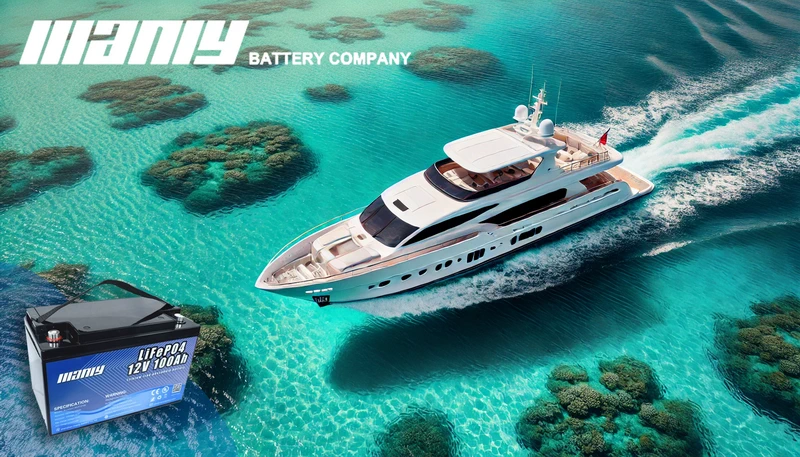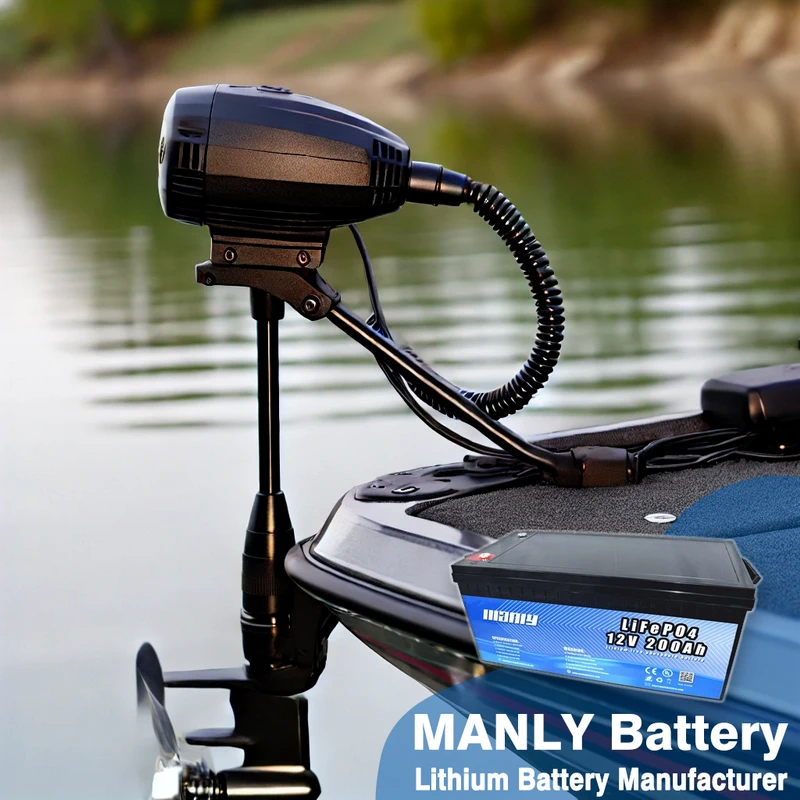Group 24 vs 31 Battery: Key Differences & Applications
Table of Contents
- Group 24 vs 31 Battery: Key Differences & Applications
Choosing the correct battery is key to ensuring reliable power for everything from small boats and RVs to commercial vehicles and off-grid systems. In this guide, we break down the differences between Group 24 and Group 31 batteries, examining everything from their physical dimensions and weight to performance and capacity. Whether you’re asking what a Group 24 battery is or comparing options in a Group 24 vs 31 battery setup, this article offers clear insights to help you make an informed decision.
Overview of Group 24 and 31 Battery
Group 24 and Group 31 batteries, versatile powerhouses, are the go-to battery types for a wide range of applications, from automotive to marine, RVs, and off-grid systems. These batteries, with their reliable performance, come in different designs, including AGM, Lithium, and Deep Cycle, each with distinct features suited to different energy demands. Their adaptability to different energy demands makes them the perfect choice for your needs.
1. What is a Group 24 Battery?
A Group 24 battery is designed for medium-sized applications where space is at a premium, but sufficient power is still necessary. Commonly used in boats, RVs, and smaller backup power systems, Group 24 batteries are compact and balance performance and size.
- AGM Group 24 battery: The AGM (Absorbent Glass Mat) design is a sealed, maintenance-free option, ensuring reliable performance without the need for regular maintenance. AGM Group 24 batteries, with their resistance to vibrations, are the perfect choice for applications where the battery may be subjected to bumps or movement, such as in boats or RVs.
- Lithium Group 24 battery: Lithium batteries are becoming more popular with their lightweight design and superior longevity. Despite the higher initial cost, the extended lifespan and better energy efficiency of Lithium Group 24 batteries make them a solid investment for users who need dependable power over the long term.
Group 24 battery dimensions typically measure about 10.25 inches (L) x 6.75 inches (W) x 9.25 inches (H). These batteries usually weigh between 40 and 50 pounds, making them relatively easy to handle and install. Group 24 deep cycle batteries are designed to be discharged and recharged multiple times without significant loss of performance, which is essential for applications like solar power setups or off-grid systems where steady power output is necessary.
2. What is a Group 31 Battery?
Group 31 batteries are more extensive and offer higher power capacity than Group 24 batteries, making them suitable for more demanding applications. These batteries are often used in commercial vehicles, larger RVs, boats, and heavy-duty backup systems.
- AGM Group 31 battery: Like the Group 24 AGM, the Group 31 AGM battery provides maintenance-free operation and superior vibration resistance. These batteries are designed to handle the demands of high-energy applications, making them ideal for use in large vehicles and equipment that require reliable power over extended periods.
- Lithium Group 31 battery: The Lithium Group 31 variant is gaining attention due to its high efficiency, longer lifespan, and lighter weight than traditional lead-acid options. Lithium batteries have the added benefit of faster charging times and better overall energy efficiency, making them a popular choice for demanding environments where power performance and weight are critical.
Group 31 battery dimensions typically measure about 13 inches (L) x 6.7 inches (W) x 9.4 inches (H), and they weigh between 60 to 70 pounds. These batteries are larger and heavier than Group 24, but their higher capacity makes them ideal for powering heavy equipment, larger vehicles, and off-grid systems that require longer runtimes and more energy storage.
Both Group 24 and Group 31 batteries are designed for deep cycle applications, meaning they can handle repeated discharge and recharge cycles without a significant drop in performance. However, the main differences between these two types are their physical size, capacity, and the type of applications they are best suited for. Group 31 batteries are better for high-capacity needs, offering higher energy storage and longer runtimes. In contrast, Group 24 batteries are more compact and lightweight, making them better suited for smaller systems or spaces with limited room for installation.
When deciding between a Group 24 and a Group 31 battery, consider your system’s power requirements. Group 24 is ideal for moderate power needs, while Group 31 is best for high-demand applications with a longer battery life and higher capacity.
Battery Size Comparison Group 24 vs Group 31
When selecting the correct battery for your needs, understanding the key differences in size, weight, and power capacity is crucial. Group 24 and Group 31 batteries are popular choices but serve different purposes. In this section, we’ll break down the characteristics of each to help you make an informed decision.
| Specification | Group 24 Battery | Group 31 Battery |
|---|---|---|
| Size (inches) | 10.25 x 6.81 x 8.88 | 13 x 6.72 x 9.44 |
| Weight | 40-50 lbs | 60-70 lbs |
| Capacity (20-hour rate) | 70-85 Ah | 95-125 Ah |
| Lifespan | 3-5 years | 4-6 years |
| Cost | More affordable | Typically more expensive |
1. How the Larger Size of Group 31 Batteries Impacts Performance
The size is one of the most noticeable differences between Group 24 and Group 31 batteries. Group 31 batteries are significantly larger, which allows them to store more power. This is reflected in their dimensions, which typically measure 13 inches in length, 6.72 inches in width, and 9.44 inches in height. With a weight of 60 to 70 pounds, Group 31 batteries offer a higher energy capacity, usually ranging from 95Ah to 125Ah.
The additional size and capacity make Group 31 batteries ideal for high-demand applications, such as powering larger RVs, boats, and heavy-duty machinery. When you need to keep multiple devices running for extended periods or power equipment that requires more energy, Group 31 batteries are the better option due to their ability to provide longer runtimes and more consistent power output.
In contrast, Group 24 batteries are smaller and lighter, with typical dimensions of 10.25 x 6.81 x 8.88 inches. Weighing between 40 and 50 pounds, these batteries are much more compact, which makes them perfect for smaller applications where space is limited but reliable power is still essential. Group 24 batteries typically have a capacity range of 70Ah to 85Ah, ideal for powering smaller systems like recreational vehicles, boats, and solar backup systems.
While Group 24 batteries are an excellent fit for moderate power needs, their smaller size and lower capacity may not be suitable for more extensive, power-hungry systems requiring extended energy output.
The larger size of Group 31 batteries directly contributes to their higher power output, making them a preferred choice for applications that demand sustained energy over time. Their higher weight also means they are designed to handle more rigorous power demands, providing a more durable and reliable solution for those who need more energy for extended periods.
In short, if you’re looking for a battery for a more energy-intensive application that requires a long-lasting power source, Group 31 batteries are the way to go. However, if you need something more compact for smaller applications with limited space, Group 24 batteries offer a more efficient and cost-effective option.
Applications of Group 24 and 31 Batteries
When it comes to selecting the right battery, it’s crucial to grasp the unique features of each type. Group 24 and Group 31 batteries, both popular choices, offer distinct advantages based on their size, power capacity, and specific use cases. Let’s delve into the unique features of each and how they are applied in real-world scenarios.
1. Group 24 Battery
Group 24 batteries, with their compact size and moderate power capacity, are particularly well-suited for specific applications. These batteries are commonly used in scenarios where space is a premium, but reliable energy is still a necessity. Let’s explore some of these typical applications in detail:
- Small Boats: In smaller boats, Group 24 batteries provide just the right amount of power for essential systems, such as navigation lights, radios, and small appliances. These batteries are perfect for recreational boating and other water activities where the energy demands are relatively low but still need to last for the duration of your outing.
- Recreational Vehicles (RVs): For RVs, Group 24 batteries offer a compact and cost-effective solution for powering basic electronics, lights, and small appliances. Even if you’re off the grid, these batteries will keep the essentials running while you enjoy your time on the road or in nature, making them a prudent choice for budget-conscious travelers. Smaller Electric Vehicles: Group 24 batteries are commonly used in smaller electric vehicles like golf carts. Their compact size allows them to fit into the tight spaces typically available in these vehicles, and their power capacity is enough to keep the car running for an entire round of golf or short-distance transportation.
While Group 24 batteries are smaller and more affordable, they might not be suitable for applications that require high energy output or extended power usage over long periods. They excel in applications where space is limited and moderate power is sufficient.
2. Group 31 Battery
On the other hand, Group 31 batteries, with their larger size, heavier weight, and higher energy capacity, are designed for a wide range of power-intensive applications. Their robust design and substantial capacity make them the go-to choice in industries and systems that demand reliable, long-lasting power. Let’s delve into some of the primary applications for Group 31 batteries:
- Commercial Trucks: In large commercial vehicles, such as trucks, Group 31 batteries power the starting engine, electrical systems, and accessories. Their high capacity ensures they can handle heavy-duty vehicles’ demands, even in harsh environments.
- Larger RVs and Motorhomes: Group 31 batteries are perfect for large RVs that need to support high-power systems, such as inverters, air conditioners, and large refrigerators. These batteries are designed to handle the energy needs of these larger vehicles, providing consistent power even when external connections are unavailable.
- Marine Vessels: For bigger boats or marine vessels, Group 31 batteries deliver the power needed for engine start-ups, navigation systems, lighting, and other essential electronics. Their ability to provide sustained power over extended periods is crucial for marine applications, where reliability is a top priority.
- Heavy Machinery: In the construction and industrial sectors, Group 31 deep cycle batteries power heavy machinery and equipment. These batteries are designed to withstand the high demands of these machines, ensuring they can perform efficiently in tough conditions without frequent battery replacements.
- Solar Power Systems: Group 31 batteries are commonly used in off-grid solar power systems. They store the energy generated by solar panels during the day and provide reliable power at night or on cloudy days. Their large capacity makes them ideal for energy storage in residential and commercial solar installations.
- Emergency Backup Systems: In critical infrastructure, such as hospitals, data centers, and telecommunications, Group 31 batteries are backup power sources during power outages. These systems ensure that essential services continue without disruption, even during long periods of power loss.
- Golf Carts: Larger golf carts, especially those used in commercial settings, often use Group 31 batteries. Their higher capacity provides the necessary energy to power the cart over long distances, ensuring that the golf cart can operate throughout an entire day on the course.
The versatility of Group 31 batteries makes them indispensable in various industries, including transportation, energy storage, and emergency backup systems. Their ability to handle higher power loads and operate in demanding conditions sets them apart from smaller battery types.
3. The Versatility of Both Batteries
Both Group 24 and Group 31 batteries are incredibly versatile, each serving a unique purpose. Group 24 batteries are perfect for applications where space is limited and moderate power is needed, such as in small boats or RVs. On the other hand, Group 31 batteries are built for more demanding environments and are essential for applications like large trucks, solar systems, and heavy machinery. This versatility empowers you to choose the right battery for your specific needs.
In both cases, understanding your power needs is essential to selecting the correct battery. Whether you’re looking for a compact, efficient solution for smaller systems or a heavy-duty powerhouse for larger applications, Group 24 vs 31 battery offers the right fit for nearly any situation.
Group 24 and 31 Lithium Batteries
Group 24 and Group 31 lithium batteries offer modern alternatives to traditional lead-acid batteries, providing significant weight, lifespan, and performance advantages. They also have a reduced environmental impact, making them a more sustainable option.
1. Advantages of Lithium Batteries
- Weight: Lithium batteries, notably lighter than their lead-acid counterparts, offer a significant convenience. For instance, a Group 31 lithium battery typically weighs around 24.25 lbs, while a Group 24 lithium battery weighs approximately 21 lbs. This weight reduction enhances fuel efficiency and simplifies handling, providing a sense of relief and ease.
- Lifespan: Lithium batteries boast a longer lifespan, often exceeding 4,000 charge cycles, compared to the 300 to 500 cycles typical of lead-acid batteries. This extended lifespan translates to fewer replacements and reduced long-term costs. Additionally, lithium batteries can be recycled at the end of their lifespan, reducing their environmental impact.
- Performance: Lithium batteries maintain consistent voltage levels throughout discharge, ensuring reliable power delivery. They also charge more rapidly, often completing in a fraction of the time required for lead-acid batteries.
2. Cost-Effectiveness
Although lithium batteries typically require a higher initial investment, their longer lifespan and enhanced performance can result in considerable savings over time. For example, a typical 24V lithium battery may range from $600 to $1,200, whereas lead-acid batteries are often priced between $200 and $400 for similar specifications. However, the reassurance of long-term cost savings is evident, considering the longer lifespan and reduced maintenance requirements of lithium batteries.
3. Applications
- Group 24 Lithium Batteries: Ideal for smaller applications such as small boats, motorcycles, utility vehicles, and smaller RVs. Their compact size and sufficient power make them suitable for moderate power demands.
- Group 31 Lithium Batteries: Suited for larger boats, heavy-duty RVs, commercial vehicles, off-grid systems, and equipment with higher power demands. Their higher capacity and longer runtime make them ideal for sustained power output applications.
In summary, Group 24 and Group 31 lithium batteries provide modern, efficient alternatives to traditional lead-acid batteries, offering advantages in weight, lifespan, performance, and cost-effectiveness across various applications.
Why Choose MANLY Battery for Your Group 24 and 31 Batteries
When it comes to powering your projects with the best group 24 vs. 31 battery solutions available, MANLY Battery is a premier advanced lithium and LiFePO4 battery manufacturer. With over a decade of industry expertise, MANLY Battery is renowned for its superior quality, reliability, and customer service.
Operating out of state-of-the-art facilities in Shenzhen, Dongguan, and Huizhou, MANLY Battery boasts an impressive 65,000 square meters of manufacturing space. Their facility produces over 3,000 batteries daily with a total capacity of 6MWh, ensuring that every product—from group 24 lithium batteries to group 31 lithium batteries and group 31 deep cycle battery options—meets rigorous quality standards.
MANLY Battery’s product lineup is tailored for diverse applications, offering lithium and LiFePO4 solutions that provide significant weight, lifespan, and performance advantages. The group 24 battery dimensions are optimized for compact installations, making them perfect for smaller vehicles, boats, and solar power systems, while the group 31 battery dimensions are designed for heavy-duty applications such as large RVs, commercial trucks, and off-grid systems. Their lithium options drastically reduce weight—beneficial when every pound matters—and maintain consistent power delivery throughout their cycle.
In addition to their high-performance batteries, MANLY Battery offers several key benefits:
- Bulk Pricing & Shipping Options: Whether purchasing a few units or outfitting an entire fleet, MANLY provides competitive bulk pricing and efficient global shipping solutions.
- Customization: With bespoke battery services, you can customize the voltage, capacity, and even the aesthetics of your batteries to match your specifications perfectly.
- Global Certifications & Warranty: MANLY Battery’s lithium and LiFePO4 products are certified internationally (UN38.3, IEC62133, UL, CE) and backed by a 10-year warranty, underscoring their commitment to long-term reliability.
- Innovative Features: MANLY Battery products offer a user-friendly experience that simplifies battery management, enhanced with modern conveniences like Bluetooth connectivity and intuitive battery level displays.
In summary, MANLY Battery is the clear choice for those seeking cutting-edge lithium and LiFePO4 battery solutions. Their focus on innovation, extensive product range, and commitment to quality make them the trusted partner for your power needs. Choose MANLY Battery for unmatched performance, reliability, and service in group 24 and group 31 batteries.
Conclusion
In summary, the decision between Group 24 and Group 31 batteries comes down to your power needs and space constraints. Group 24 batteries, with their compact dimensions and lighter weight, are ideal for moderate applications, while Group 31 batteries provide the robust capacity required for heavy-duty systems. By understanding factors such as battery dimensions, weight, and overall performance, you can confidently choose the battery that best suits your project’s demands.
FAQ
1. What is the difference between group 24 and 31 batteries?
A: The main differences lie in size, weight, and capacity. Group 24 batteries are smaller—typically around 10.25 x 6.81 x 8.88 inches and weighing 40-50 lbs—making them ideal for moderate applications like small boats and RVs. In contrast, Group 31 batteries are larger—approximately 13 x 6.72 x 9.44 inches and weighing 60-70 lbs—with a higher energy capacity suited for heavy-duty systems such as commercial vehicles and off-grid installations.
2. What is the Ah rating of a group 24 battery?
A: Group 24 batteries usually have an amp-hour rating between 70 Ah and 85 Ah, providing reliable power for applications where space is limited but steady energy is needed.








